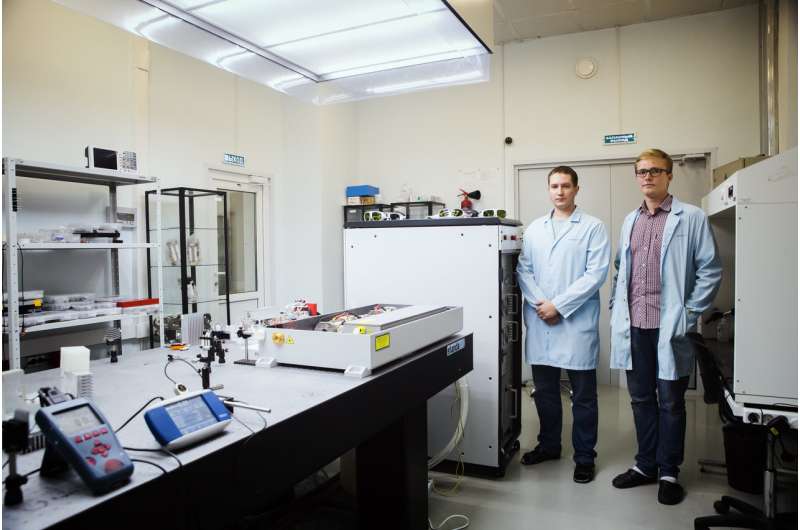Russian scientists develop high-precision laser for satellite navigation

Scientists from ITMO University developed a laser for precise measurement of the distance between the moon and Earth. The short pulse duration and high power of this laser help to reduce errors in determining the distance to the moon to just a few millimeters. This data can be used to specify the coordinates of artificial satellites in accordance with the lunar mass influence to make navigation systems more accurate. The study was published in Optics Letters.
Both GPS and GLONASS systems are based on accurate measurement of the distance between a terrestrial object and several artificial satellites. Satellite coordinates must be as accurate as possible to ensure precise object location. Additionally, the moon's mass affects satellite trajectories. Therefore, lunar coordinates must be taken into account when calculating satellite position. The lunar coordinates are obtained by measuring the distance to the moon with laser locators. The accuracy of such locators depends on the laser features. For example, the shorter the pulse and the smaller the laser's beam divergence, the easier it is to measure the distance between the laser and the moon.
Scientists from ITMO University's Research Institute of Laser Physics have developed a laser for a lunar locator capable of measuring the distance to the moon with a margin of error of a few millimeters. The laser boasts a relatively small size, low radiation divergence and a unique combination of short pulse duration, high pulse energy and high pulse repetition rate. The laser pulse duration is 64 picoseconds, which is almost 16 billion times less than one second. The laser's beam divergence, which determines radiation brightness at large distances, is close to the theoretical limit; it is several times lower than the indicators described for similar devices.

"Actually, creating a laser with a pulse duration of tens of picoseconds is no longer technically difficult," says Roman Balmashnov, engineer at the Research Institute of Laser Physics and PhD student at ITMO University School of Photonics. "However, our laser's output pulse energy is at least twice higher than that of its analogs. It is 250 millijoules at the green wavelength and 430 millijoules at the infrared wavelength. We managed to achieve high pulse repetition rate of 200 Hz and energy stability, so the pulse energy does not vary from pulse to pulse."
The new laser will be used in a lunar laser locator of the GLONASS navigation system. This will make it possible to correct satellite coordinates calculating in real-time, making the Russian navigational system more accurate. The margin of error when locating users may be reduced to 10 cm.
"The laser we've developed is a cutting-edge by several criteria. According to our data, it is the most powerful pulse-periodic picosecond source of laser radiation in the world. In addition to strictly ranging applications, lasers of this class can be used for imaging of orbital objects, for example, satellites or space debris," notes Andrey Mak, the head of ITMO University's Research Institute of Laser Physics.
More information: A. F. Kornev et al. 043 J/100 ps Nd:YAG laser with adaptive compensation of thermally induced lens, Optics Letters (2018). DOI: 10.1364/OL.43.004394
Journal information: Optics Letters
Provided by ITMO University


















